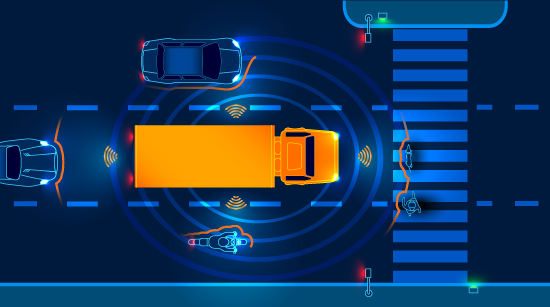
Telematics devices can be a significant asset for a company. The information gathered from the data collected can help you improve your routes and operations, track driver behavior and stay current on maintenance.
There are various types of telematics systems used in passenger and commercial vehicles, all of which use an internal accelerometer to capture vehicle operation data points such as acceleration, deceleration, turning, and vehicle location. These include GPS devices, cameras which capture video inside and outside of vehicles, artificial intelligence (AI) systems used to identify driver behavior and other telematics systems for various purposes.
The first step is finding the right system for your unique fleet.
OBD II
Onboard diagnostics II (OBD II) is the electronic system in a vehicle that provides information technicians use to diagnose issues and repair a vehicle. This same port can be used for a plug-and-play unit that monitors vehicle speed, fuel consumption, emissions, performance and more. These units are compact, lightweight and easy to install. They use WIFI to transmit information to a base station where the telematics software can analyze location, speed, route and track vehicle maintenance. They can easily be moved from one vehicle to another.
Hand-held or Smartphone-based systems
With this type of system, a hand-held device uses a mobile app to collect data through Bluetooth enabled vehicle sensors and then sends that data to the home station. This system offers real-time data, is convenient and easily accessible. It is also vulnerable to deliberate fraud by the driver as the units can be mishandled to provide incorrect data.
Hard-wired telematics device
This type of device is very robust and secure. Unlike OBD II or wireless devices, the unit is directly connected to the vehicle and powered through the vehicle’s battery. The main component is the telematics control unit (TCU) which may consist of a GPS unit, a dash-mounted device such as a camera, a cellular communication unit and microprocessor unit which connects with the vehicle’s engine. These devices and send critical data over a wireless system.
Other factors to consider
Complexity of the system: Does the system collect the data you want to see? Are you able to analyze the data and make decisions?
Cost: Can you recoup the cost of the system and installation by making better decisions about your fleet? Will providing better insights and training to your drivers reduce the number and costs of repairs?
Reliability: Can you count on the system to perform as desired? If the system uses WIFI to transmit data, are your routes in locations that have reliable infrastructure? Do you have recharging stations for handheld units?
All telematics systems collect, process, and evaluate in-vehicle data in different ways, but serve the same purpose: complete fleet management. The size and complexity of your business will determine which unit is best for your fleet.
This video can also help you with the process.